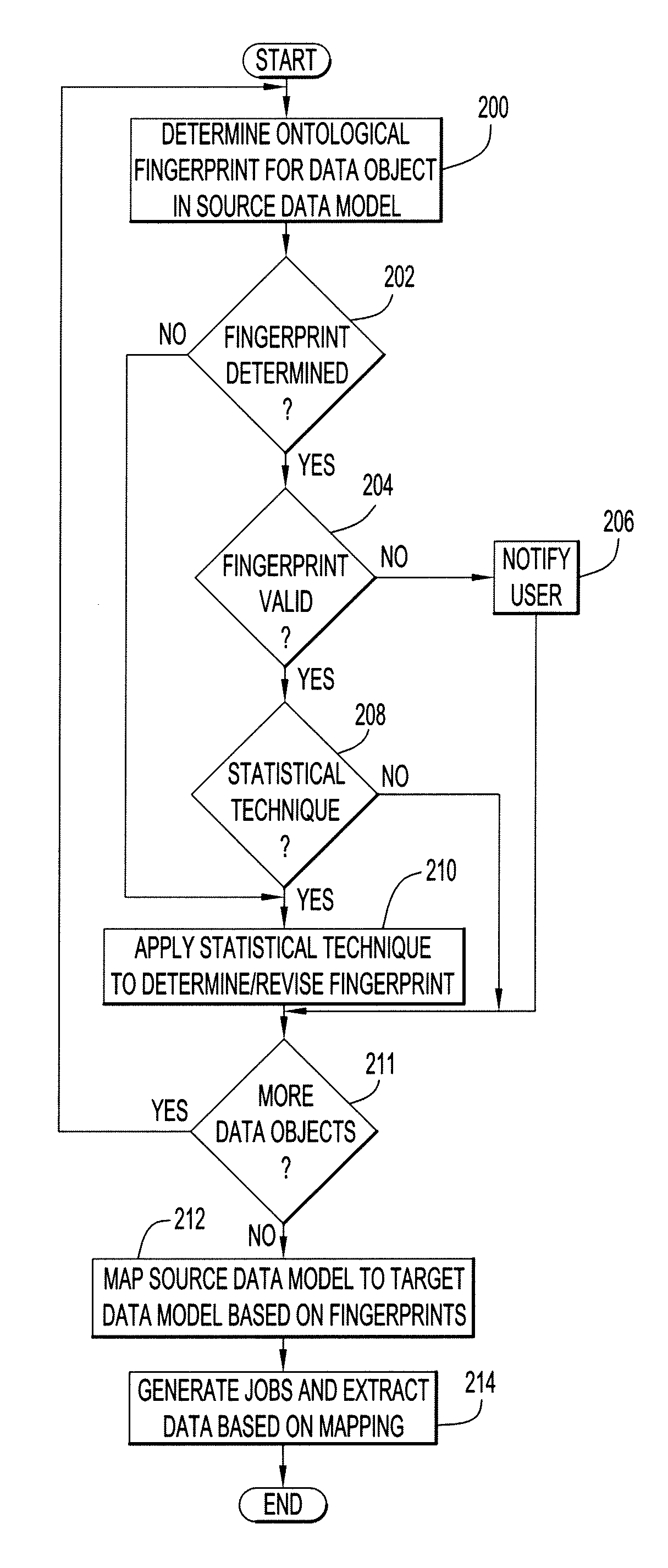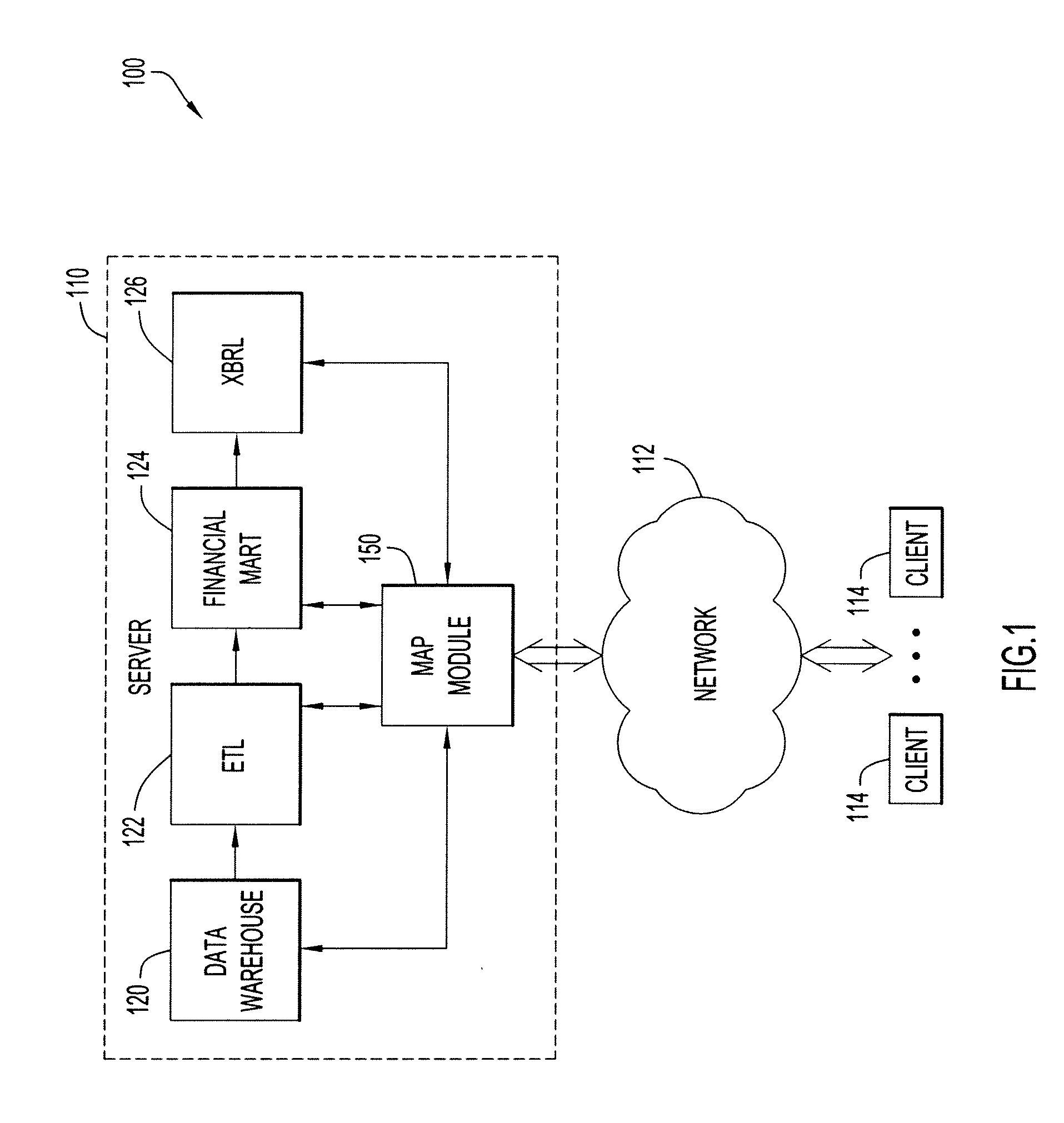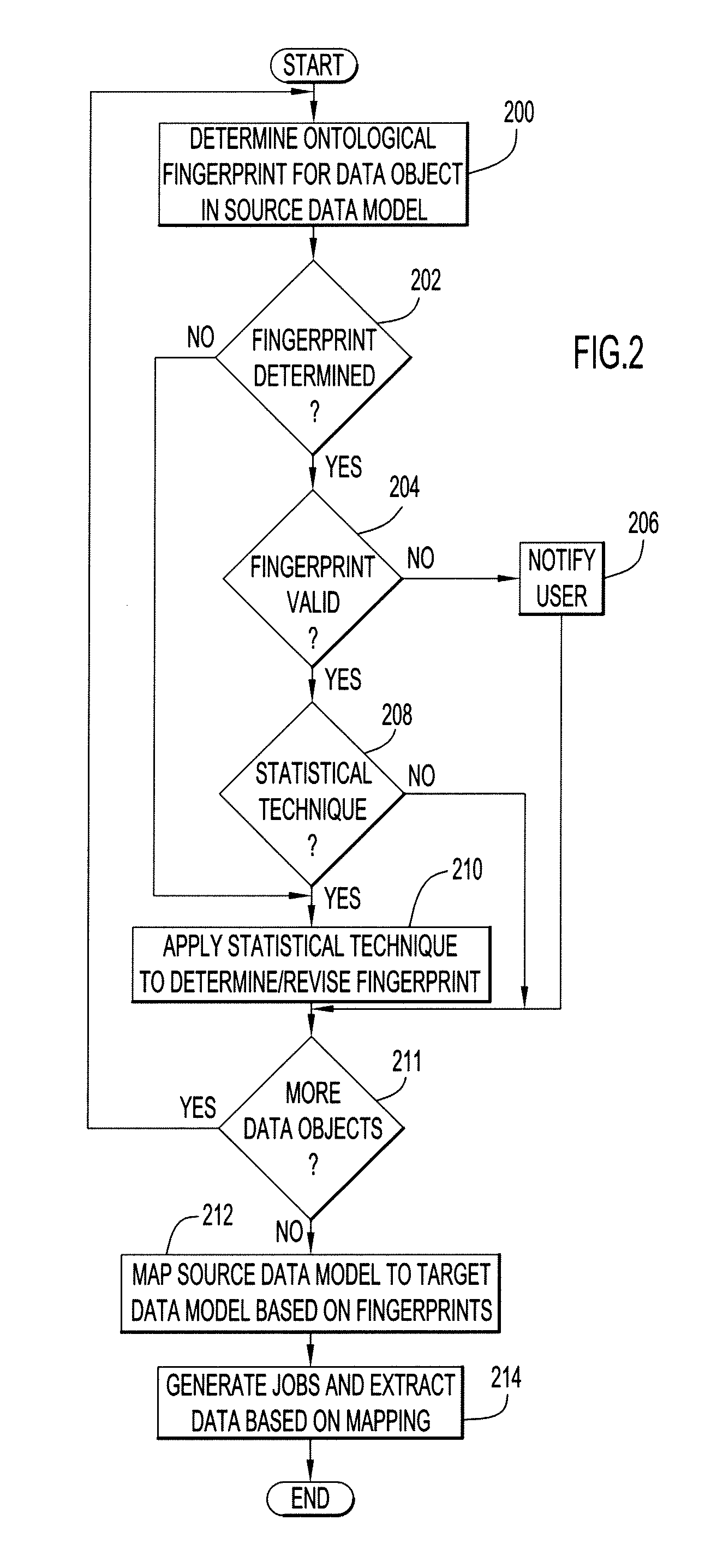Auto-Mapping Between Source and Target Models Using Statistical and Ontology Techniques
- Summary
- Abstract
- Description
- Claims
- Application Information
AI Technical Summary
Benefits of technology
Problems solved by technology
Method used
Image
Examples
Embodiment Construction
[0012]Present invention embodiments pertain to mapping data from a source data model (e.g., a data warehouse) to a target data model (e.g., eXtensible Business Reporting Language (XBRL) used to file annual reports with a financial authority (e.g., New York Stock Exchange, Securities Exchange Commission (SEC)). This enables extraction of appropriate data from the source data model (e.g., data warehouse) for insertion into the target data model (e.g., XBRL-based report).
[0013]Since XBRL is built on XML, XBRL must comply with the requirements for XML. However, XBRL provides advantages with respect to XML. For example, XBRL enables semantics across elements which cannot be expressed using native XML. Furthermore, these semantic expressions can be validated. XBRL is flexible with greater ability to allow change. By way of example, XBRL maintains schema and data separately, where XBRL instance documents are basically containing only data immune to the sequence of the data and without hier...
PUM
 Login to View More
Login to View More Abstract
Description
Claims
Application Information
 Login to View More
Login to View More - R&D
- Intellectual Property
- Life Sciences
- Materials
- Tech Scout
- Unparalleled Data Quality
- Higher Quality Content
- 60% Fewer Hallucinations
Browse by: Latest US Patents, China's latest patents, Technical Efficacy Thesaurus, Application Domain, Technology Topic, Popular Technical Reports.
© 2025 PatSnap. All rights reserved.Legal|Privacy policy|Modern Slavery Act Transparency Statement|Sitemap|About US| Contact US: help@patsnap.com



